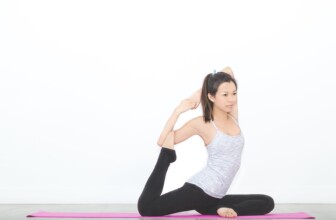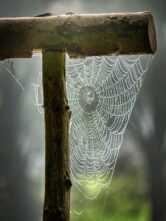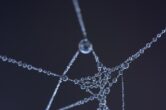Sound Solutions: The Essential Guide to Effective Hearing Protection in Everyday Life
Table of Contents
- 1. Introduction
- 2. Understanding Hearing Loss
- 3. The Importance of Hearing Protection
- 4. Types of Hearing Protection
- 5. How to Choose Hearing Protection
- 6. Proper Use and Care of Hearing Protection
- 7. Real-Life Examples and Case Studies
- 8. Frequently Asked Questions (FAQ)
1. Introduction
Effective hearing protection is an often-overlooked aspect of health and safety in a world filled with noise. Our ears, while incredibly intricate and sensitive, are vulnerable to the perils of loud sounds, which can lead to permanent hearing loss. This comprehensive guide aims not only to highlight the importance of hearing protection but also to provide readers with the tools needed to make informed decisions about their auditory health.
2. Understanding Hearing Loss
2.1 Types of Hearing Loss
Hearing loss is categorized primarily into three types: conductive, sensorineural, and mixed hearing loss. Conductive hearing loss occurs when there is a problem with the outer or middle ear that impedes sound from being conducted to the inner ear. Sensorineural hearing loss is a result of damage to the inner ear or the auditory nerve pathways to the brain, often caused by exposure to loud noise. Mixed hearing loss includes elements of both conductive and sensorineural loss.
2.2 Causes of Hearing Loss
There are numerous causes of hearing loss, ranging from genetic predisposition to exposure to loud noise, age-related degeneration, ototoxic medications, and earwax buildup. Each of these causes has different implications for the type of hearing loss experienced and the appropriate protective measures that one should consider.
2.3 Impact of Hearing Loss
The implications of hearing loss extend beyond the auditory system, affecting emotional, social, and cognitive aspects of life. Individuals with hearing loss may experience isolation, frustration, and a decline in overall quality of life, underscoring the importance of early intervention and effective hearing protection.
3. The Importance of Hearing Protection
3.1 Why Use Hearing Protection?
Hearing protection serves to reduce the intensity of sound, thus protecting the delicate structures within the ear from damage. Regular exposure to sounds above 85 decibels can lead to irreversible hearing loss. Therefore, using hearing protection is crucial in environments where noise levels exceed this threshold.
3.2 High-Risk Environments
High-risk environments for hearing damage include construction sites, manufacturing plants, music venues, and recreational shooting. In these situations, properly using hearing protection can significantly reduce the risk of permanent hearing loss and improve overall job safety.
4. Types of Hearing Protection
4.1 Earplugs
Earplugs are one of the most common forms of hearing protection, designed to fit snugly into the ear canal. They come in various materials, including foam, silicone, and custom-molded types. While they can effectively reduce sound levels, their fit is essential to ensure optimal protection.
4.2 Earmuffs
Earmuffs consist of a hard outer shell with soft padding that covers the entire ear. Often preferred in industrial settings, they provide a higher degree of noise reduction and can be worn comfortably for extended periods. Their effectiveness can diminish if not fitted properly, emphasizing the necessity of regular maintenance and adjustment.
4.3 Customized Protection
For those who spend significant time in noisy environments, custom-molded ear protection can provide the best fit and sound attenuation. An audiologist can create these molds, ensuring a snug fit that personalizes the protective experience.
5. How to Choose Hearing Protection
5.1 Fit and Comfort
Choosing hearing protection requires attention to fit and comfort. Poorly fitting protection is less effective and may lead to increased noise exposure. Users should try various types to find the most comfortable option, taking into account wear duration and conditions.
5.2 Noise Reduction Rating (NRR)
The Noise Reduction Rating (NRR) provides a quantifiable measure of how much noise the hearing protection can block. When selecting hearing protection, understanding and using the NRR correctly can greatly influence personal safety in noisy environments.
5.3 Activity-Specific Factors
Different activities may require different types of hearing protection. For instance, musicians may need attenuative earplugs that balance sound fidelity with protection, while construction workers might prioritize maximum noise blocking. Understanding activity-specific needs is crucial for selecting the appropriate hearing protection.
6. Proper Use and Care of Hearing Protection
6.1 Correct Usage
To ensure maximum effectiveness, hearing protection must be used correctly. For earplugs, this means inserting them properly into the ear canal, while earmuffs should fit snugly over the ears. Education and habit training can enhance proper usage across various settings.
6.2 Maintenance
Regular maintenance is essential for the longevity and effectiveness of hearing protection devices. Guidelines for cleaning and storing different types of hearing protectors can prevent degradation and ensure continued protection. Maintenance practices may also vary according to the material and type of protection used.
7. Real-Life Examples and Case Studies
7.1 Case Study: Industrial Workers
A recent study involving industrial workers highlighted the effectiveness of a comprehensive hearing conservation program that included regular hearing tests, mandatory use of hearing protection, and ongoing education regarding noise hazards. After six months, reported incidents of hearing loss decreased significantly, illustrating the importance of strategic interventions.
7.2 Case Study: Musicians
Musicians face a unique challenge regarding hearing protection. A case study of a professional orchestra revealed that musicians who used custom-molded earplugs not only preserved their hearing but also maintained sound quality perception, enabling them to perform without compromising their auditory health.
8. Frequently Asked Questions (FAQ)
Q: What is the best type of hearing protection for daily use?
A: The best type of hearing protection varies based on your environment and personal comfort. Generally, earplugs are suitable for sporadic use in noisy environments, while earmuffs are preferable for extended use in consistently loud settings.
Q: How often should I replace my hearing protection devices?
A: Replacement frequency depends on the type of device. Foam earplugs should generally be replaced after a single use, while earmuffs can last several years with proper care.
Q: How can I tell if my hearing protection is working?
A: You can check the fit and ensure that they are causing a significant reduction in noise levels. Regular hearing check-ups with an audiologist can also help monitor any changes in your auditory health.
Resources
| Source | Description | Link |
|---|---|---|
| CDC: Noise and Hearing Loss | Information on causes and prevention of hearing loss due to noise exposure. | Link |
| NIOSH: Hearing Protector Compendium | A comprehensive guide to different hearing protection devices. | Link |
| American Speech-Language-Hearing Association | Resources on hearing protection and understanding hearing health. | Link |
Conclusion
In conclusion, effective hearing protection is a vital component of overall health and well-being in our increasingly noisy world. With a better understanding of the types of hearing loss, the importance of hearing protection, and how to select and maintain protective devices, individuals can take proactive measures to safeguard their auditory health.
As technology continues to advance, we may see innovative solutions for hearing protection that integrate comfort with efficacy. Future research should focus on developing materials that enhance protection while also maintaining sound fidelity, particularly for sensitive environments like concert halls.
Disclaimer
The information presented in this article is intended for educational purposes only and should not be considered medical advice. For personalized recommendations and assessments regarding hearing loss and protection, it is essential to consult a qualified healthcare professional or audiologist.










